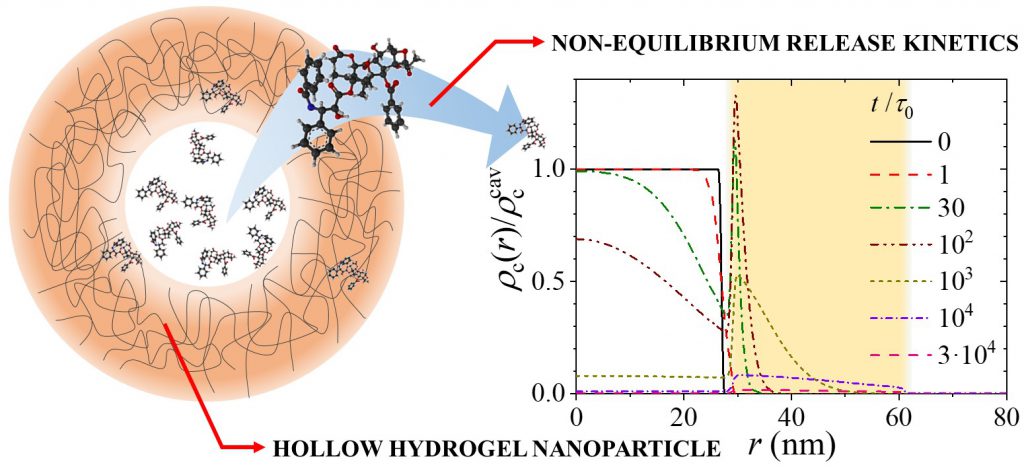A. Moncho-Jordá, A.B. Jódar-Reyes, M. Kanduc, A. Germán-Bellod, J.M. López-Romero, R. Contreras-Cáceres, F. Sarabia, M- García-Castro, H.A. Pérez-Ramírez, and G. Odriozola
We study the nonequilibrium diffusive release of electroneutral molecular cargo encapsulated inside hollow hydrogel nanoparticles. We propose a theoretical model that includes osmotic, steric, and short-range polymer−cargo attractions to determine the effective cargo−hydrogel interaction, ueff*, and the effective diffusion coefficient of the cargo inside the polymer network, Deff*. Using dynamical density functional theory (DDFT), we investigate the scaling of the characteristic release time, τ1/2, with the key parameters involved in the process, namely, ueff*, Deff*, and the swelling ratio. This effort represents a full study of the problem, covering a broad range of cargo sizes and providing predictions for repulsive and attractive polymer shells. Our calculations show that the release time through repulsive polymer networks scales with q2exp(βueff*)/Deff* for βueff*>> 1. In this case, the cargo molecules are excluded from the shell of the hydrogel. For attractive shells, the polymer retains the cargo molecules on its internal surface and its interior, and the release time grows exponentially with the attraction strength. The DDFT calculations are compared to an analytical model for the mean first passage time, which provides an excellent quantitative description of the kinetics for both repulsive and attractive shells without fitting parameters. Finally, we apply the method to reproduce experimental results on the release of paclitaxel from hollow poly(4-vinylpyridine) nanoparticles and find that the slow release of the drug can be explained in terms of the strong binding attraction between the drug and the polymer.

